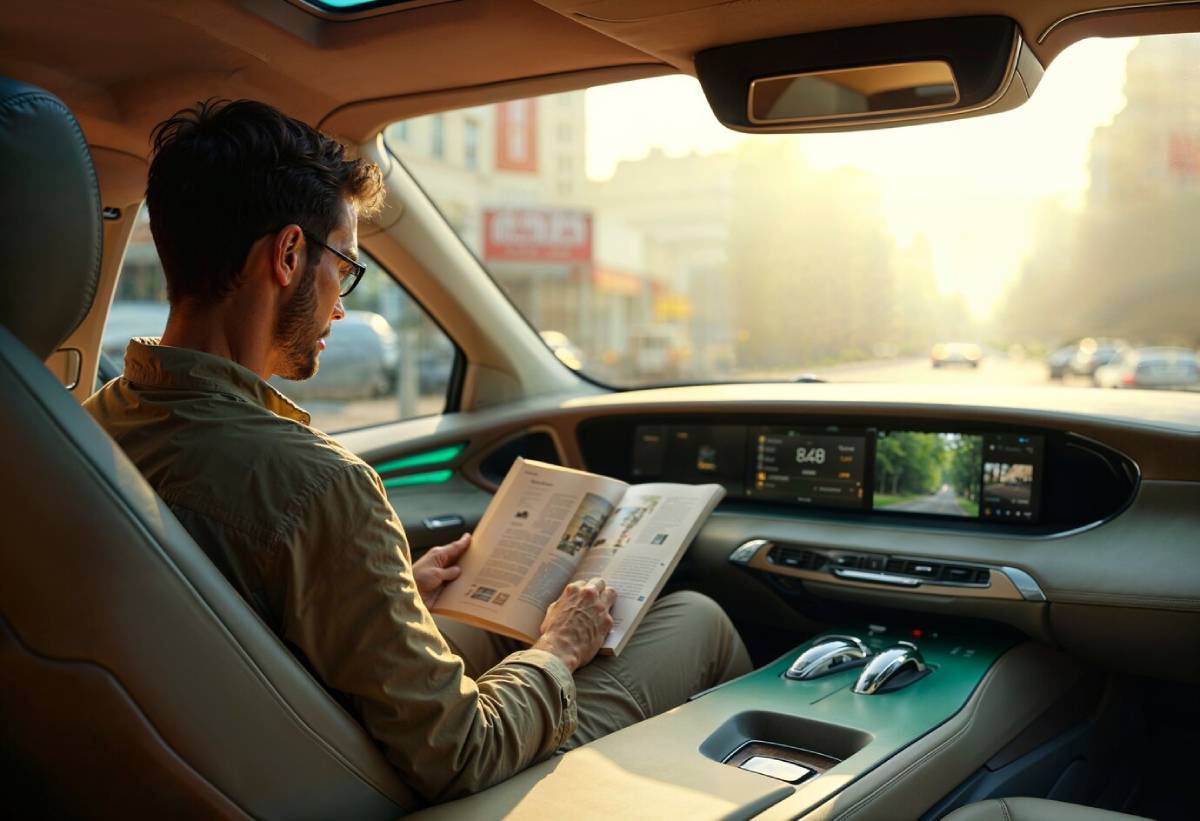
How AI is Enabling Self-Learning Cars
The automotive industry has changed a lot in recent years, mainly due to the fast growth of artificial intelligence (AI). One exciting development is self-learning cars, which could change how we see and use vehicles. This blog looks at AI in cars and shows how smart driving algorithms help create vehicles that learn independently.
Key Benefits of Self-Learning Cars
Self-learning vehicles represent a monumental leap forward in automotive technology. These cars learn from their surroundings. They keep getting better at performance and safety. But why is this development so crucial?
Enhanced Safety Features
Self-learning cars can greatly improve road safety. AI helps cars handle a lot of data quickly, allowing them to make fast decisions to avoid accidents. Adaptive driving algorithms help cars spot and react to potential hazards better than old systems.
ADAS in self-learning cars can:
- Detect lane departures
- Identify pedestrians
- Anticipate other drivers’ actions
These systems react faster than humans. They also reduce human error, a major cause of traffic accidents.
Improved Driving Experience

Self-learning vehicles are also poised to offer a more personalised driving experience. These cars collect and analyse data, which helps them adjust to each driver’s habits and preferences. This means the vehicle can improve settings over time. It adjusts things like seat position, climate control, and preferred routes, boosting comfort and convenience.
Self-learning systems can change driving styles based on traffic and driver habits, leading to a smoother and more intuitive ride. This flexibility gives each user a customised experience for shared or fleet vehicles, eliminating the need for manual adjustments.
Environmental Impact
Self-learning cars can also help lower the driving environmental impact. These vehicles can lower emissions and reduce carbon footprint by optimising driving patterns and improving fuel efficiency. As AI in cars grows, we can expect more new ideas that focus on being eco-friendly.
Self-learning cars can quickly decide to avoid traffic jams or bad routes. This helps save fuel. They also work well with electric vehicle (EV) technology. They manage battery use, regenerative braking, and charging strategies more efficiently.
Additional Expert Tips & Common Mistakes to Avoid
Self-learning vehicles have great potential, but there are important things to consider. Both manufacturers and consumers should be aware of common pitfalls.
Embrace Continuous Learning
For self-learning cars to perform at their best, they must adopt continuous learning. This means updating software and algorithms often, which helps vehicles adapt to new challenges and environments. Manufacturers must also focus on ongoing research and development, which will keep them informed about the fast-changing world of AI in cars.
Vehicle systems must be designed with modular software that supports over-the-air (OTA) updates. These updates improve features, fix security issues, and work with new data sources.
Avoid Over-Reliance on Technology
AI-driven systems bring many benefits, but we should not rely on them too much. Drivers should remain vigilant and engaged, ready to intervene if necessary. Manufacturers must also ensure that self-learning vehicles have strong fail-safes, which help prevent possible malfunctions.
Adding redundancy and fallback systems can prevent major failures if errors occur. Using dual sensor systems, manual override controls, and thorough testing reduces the need for automation.
Address Privacy Concerns

Self-learning vehicles gather and handle a lot of data, which raises privacy concerns. Manufacturers must use strict data protection measures and be clear about how they use data. Consumers should be informed about how their data is being used and have the option to opt out if desired.
To keep user trust and use AI ethically, follow data protection laws like GDPR. Anonymise user data and ensure clear consent mechanisms.
Advanced Insights & Expert Recommendations
To understand self-learning vehicles, we need to explore the technology behind them. Here are some advanced insights and expert recommendations to consider.
The Role of Machine Learning
Self-learning cars rely on machine learning. This is a part of AI that helps systems learn and get better with experience. These vehicles can handle tricky driving situations. They use supervised learning, unsupervised learning, and reinforcement learning. Machine learning algorithms use large datasets to find patterns and make predictions. This improves how well self-learning vehicles perform.
Neural networks, decision trees, and deep learning help cars understand sensor data. They can recognise traffic signs, classify obstacles, and predict where pedestrians will move. Using real-world data sharpens these models constantly, boosting accuracy and speeding up decision-making.
Integration with IoT
The Internet of Things (IoT) plays a crucial role in developing self-learning cars. IoT connects vehicles to a network of devices and sensors, allowing for real-time data sharing and communication. This connectivity helps self-learning vehicles gather important information. They can learn about traffic, weather, and road conditions, making them even better at adapting.
IoT integration enables vehicle-to-everything (V2X) communication. This allows cars to connect with traffic lights, other vehicles, and emergency systems. This interconnected environment boosts efficiency, reduces accidents, and supports autonomous decision-making.
Collaboration with Industry Stakeholders
Collaboration between industry stakeholders is essential to accelerate the adoption of self-learning vehicles. Car makers, tech firms, and regulators need to team up. They should create standards and guidelines. This will help ensure AI automotive tech is safe and works well. We can drive innovation and overcome potential challenges by fostering a collaborative ecosystem.
Joint ventures, open innovation platforms, and standardised APIS help make integration easier. They also support technology sharing. Government incentives and regulatory sandboxes can encourage experimentation while maintaining safety standards.
Conclusion: The Road Ahead for Self-Learning Cars

Self-learning cars are a big step forward for the automotive industry. AI automotive tech and adaptive driving algorithms can change our roads, enhancing safety and improving the driving experience. Looking ahead, we must embrace continuous learning. We also need to tackle privacy concerns and encourage collaboration. This will help us unlock the full potential of self-learning vehicles.
In conclusion, the journey towards fully autonomous, self-learning cars is underway. Technology is advancing fast, and we will see amazing new ideas that change how we use our vehicles. The road ahead is undoubtedly exciting, and the possibilities are endless. Are you ready to embrace the future of driving?